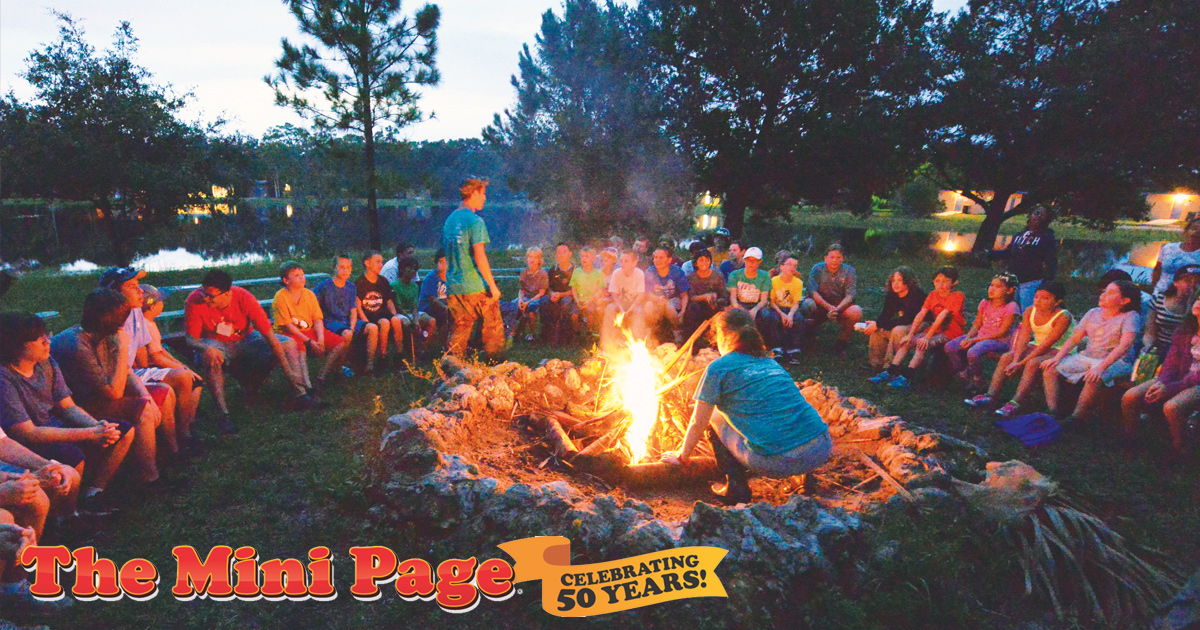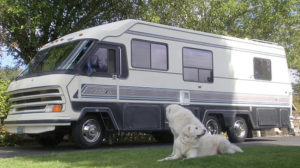
AMP | Kids is proud to announce an ongoing partnership with The Mini Page, now in its 50th year of providing engaging and fun learning opportunities to young readers across the country. This feature was originally syndicated in newspapers the week of June 15 – 21, 2019. It is distributed digitally here with permission from Andrews McMeel Syndication. Enjoy and share with the young learners in your life!
Does your family ever go camping? Come along with us and find out more about this great way to have fun and enjoy America’s natural beauty.
First campers
One of the first people to encourage camping for fun was Thomas Hiram Holding. In 1853, when he was just 9 years old, he and his parents crossed the prairies of America as part of a wagon train. He wrote a book, “The Camper’s Handbook,” in 1908 and started camping clubs.
Why camping?
People like to camp for many reasons:
- It’s not expensive.
- Campers enjoy being close to nature.
- Campgrounds can be found in all parts of the country and near many different attractions: lakes, oceans, mountains, deserts and forests. You can even camp in your own backyard!
Different ways to camp

A recreational vehicle.
Most campers sleep in tents. But there are other forms of camping:
- Some people own or rent recreational vehicles, or RVs. These “homes on wheels” have many conveniences, such as stoves, TVs and bathrooms. They can be parked at campgrounds, where campers can plug into electricity.
- Others like cabin camping. Some campgrounds have cabins for rent.
What will you need?
Getting ready for a camping trip is almost as much fun as the trip itself. You can help your family prepare by organizing the things you’ll need.
Some people camp with very little gear. Others take along lots of things to make camping almost as comfortable as home. You might start with:
- a tent, with stakes and a tarp to put under the tent (to keep you dry).
- a sleeping bag (and a pad to make you more comfortable) and a pillow.
- clothes. Even in the summer, it can be cool in the morning. Bring a jacket or sweatshirt.
- a lantern or large flashlight. Once the sun goes down, a light will make it easier to play games or find your way to the restroom.
- cookware, plates, utensils and cups.
- a camp stove to heat water and cook on.
Clean up
When it’s time to go home, be careful to leave your campsite as you found it. Remove all your trash. Make sure your fire is cold. Campers call this “leaving no trace.”
Stuff to do
-
 Identify animal tracks. Footprints can be seen easily in mud or in sandy areas. You can also tell that small animals have been around by finding pine cones or acorns that have been chewed on. If you see trees that have the leaves stripped off the lower branches, there may be deer around your campsite. And look for feathers from birds that live in the area.
Identify animal tracks. Footprints can be seen easily in mud or in sandy areas. You can also tell that small animals have been around by finding pine cones or acorns that have been chewed on. If you see trees that have the leaves stripped off the lower branches, there may be deer around your campsite. And look for feathers from birds that live in the area.
- Play games. It’s fun to invent games in your campsite. Try these:
- Blindfold one person. Give him or her objects from the campsite to identify by touch. When the blindfolded person guesses wrong, you switch places.
- Make a list of 10 items found in or around the campsite. Divide into teams. Whichever team brings back the most items from the list in 15 minutes wins.
Resources
On the Web:
At the library:
- “Camping” by Adeline Snyder
Teachers: For standards-based activities to accompany this feature, visit Andrews McMeel Syndication. And follow The Mini Page on Facebook!
